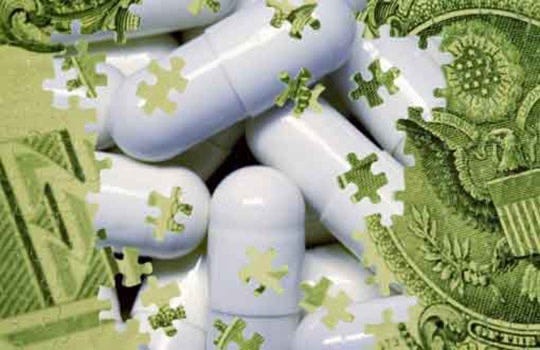The Opioid Crisis: WHY did it start?
Answering WHYs about the biggest public health crisis of the past 20 years, which is NOT the pandemic.
The Opioid Crisis: Why did it start?
Given the disastrous effects of the coronavirus pandemic, is it crazy to claim the opioid epidemic is larger than the pandemic? In 2021 alone, over 400,000 people died due to Covid-19. However, thanks to vaccines, the number of Covid deaths in 2022 dropped like a rock to barely over 40,000.[1] Although opioid deaths don’t have the same yearly impact as Covid did, deaths have been rising for over 20 years. 2022 saw 79,000 people die from opioid-related overdoses. This is almost twice the 2022 deaths from Covid-19, and nearly 30,000 higher than overdose levels pre-pandemic. Although this series may have less of my usual humor, I promise to provide solid answers to “WHY?” we have arrived at this point, and perhaps some optimism for solutions.
1. What is an opioid?
Opioids are drugs originally formulated to manage pain. This includes prescription drugs like oxycontin, and illicit drugs such as heroin and, more recently, fentanyl. These drugs attach to proteins called opioid receptors on nerve cells in the body to block pain messages to the brain. Too much of the drug overwhelms the brain and ends the body’s drive to breathe, leading to death.[2]

Opioids become a problem because they are highly addictive. Some prescription opioids are oxycodone (brand name OxyContin or Percocet), hydrocodone, and morphine. Studies suggest that up to one-third of people taking opioids to manage chronic pain misuse them and more than 10 percent become addicted over time.[3]
2. New formulation in the 1980s
In the 1980s, new formulations for pain relief were developed using opioids and were aggressively marketed as a superior form of treatment, taking off during the 1990s. Because these were new formulations, the pharmaceuticals were marketed as not being as addictive as before. However, these claims were based on low-quality data and contradicting evidence was not shared as it their highly addictive nature became apparent. Additionally, insurers had placed these opioids on low-cost tiers of their formularies, which led to consumers preferring these products over pre-existing pain treatments.
3. Details about detailing
Why didn’t this all hit the brakes when it became clear that prescription opioids were highly addictive? Several factors contributed. One is the fragmented nature of the U.S. health care information system. Because medical utilization information is not centralized, as might be with nationalized healthcare, the problem was harder to track.
An even bigger problem is the incentives faced by prescribing doctors. Pharmaceutical companies in the U.S. generally do not advertise directly to consumers, but instead use something called “detailing” to educate medical providers about their products and to encourage their use. Detailing can be educational visits (with nice lunches), but also promotional speaking fees, luxury meals, travel, and cash transfers. One study found that over half of 400,000 physicians who prescribed opioids had received payments from the pharmaceutical companies who produced them.[4] This is a form of moral hazard, where the individual making the decision (here, prescribing a potentially addictive opioid) is insulated from consequences of this action (and in fact, may benefit financially).
In the next two months, we will walk through how the crisis has expanded to today then end with some discussion of solutions being tried and our paths forward. Check out Part II, examining why the crisis became so devastating.
As always, keep me updated on what you’re up to or reach out to chat with me about these issues!
Best,
TMD
[1] “Provisional Death Counts for Coronavirus Disease 2019 (COVID-19)” Weekly Updates by Select Demographic and Geographic Characteristics. CDC Death Data and Resources.
[2] American Society of Anesthesiologists “What are opioids? - made for This moment”. Made For This Moment | Anesthesia, Pain Management & Surgery.
[3] “How to tell if a loved one is abusing opioids” Mayo Clinic.
[4] Hadland SE, Rivera-Aguirre A, Marshall BDL, Cerdá M. Association of Pharmaceutical Industry Marketing of Opioid Products With Mortality From Opioid-Related Overdoses. JAMA Netw Open. 2019;2(1):e186007.




